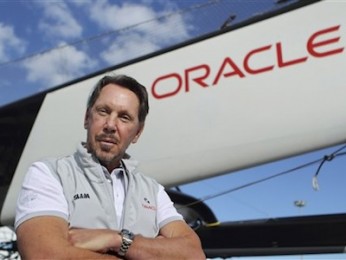 Database outfit Oracle reported strong earnings and promised a generative artificial intelligence service.
Database outfit Oracle reported strong earnings and promised a generative artificial intelligence service.
The database giant reported fiscal fourth-quarter net income of $3.32 billion, up from a $3.19 billion profit a year earlier. Earnings before certain costs, such as stock compensation, came to $1.67 per share, beating Wall Street’s target of $1.58 per share. Revenue rose 17 per cent from a year earlier, to $13.84 billion.
Chief Executive Safra Catz told analysts on a conference call that she’s looking for earnings of $1.12 to $1.16 per share on revenue growth of between 8-10 per cent. Wall Street had been looking for first-quarter earnings of $1.14 per share on revenue of $12.34 billion, which implies growth of just 7.8 per cent.
Oracle said its biggest revenue segment, cloud services and license support, rose 23 per cent, to $9.37 billion in the quarter. Revenue from its cloud licenses and on-premises segment fell 15 per cent, to $2.15 billion.
The company’s fastest-growing segment is its cloud infrastructure division, which competes directly with public cloud infrastructure providers such as Amazon Web Services., Microsoft, and Google. The unit’s revenue grew by an impressive 76 per cent, to $1.4 billion, and is therefore expanding much faster than its rivals, though it remains much smaller. Catz said on the call that Oracle’s cloud infrastructure unit’s gross margin is expected to continue expanding in the new fiscal year.
Total revenue rose to $50 billion, up 18 per cent from the previous year.
During the conference call, Oracle founder, Chairman and Chief Technology Officer Larry Ellison said the company will soon introduce a new generative AI cloud service in partnership with the startup Cohere.
The new service will be similar to Microsoft’s Azure OpenAI service, which allows customers to deploy large language models that respond to human prompts in a conversational way.
“This new service protects the privacy of our enterprise customer’s training data, enabling those customers to safely use their own private data to train their own private, specialized large language models,” Ellison said.





